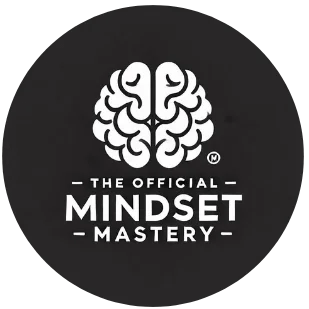Discover the transformative power of mindfulness meditation and unlock a world of inner peace. In today’s fast-paced society, where stress and anxiety often reign supreme, this ancient practice offers a sanctuary of calm amidst the chaos. Mindfulness meditation has gained significant popularity in recent years, with over 14% of Americans reporting they’ve tried it at least once, according to a 2017 National Health Interview Survey. Let’s explore how this simple yet profound technique can revolutionize your daily life and mental well-being.
The essence of mindfulness meditation
Mindfulness meditation is more than just a trendy wellness practice; it’s a scientifically-backed method for cultivating awareness and presence. At its core, mindfulness meditation involves paying attention to the present moment without judgment. This practice encourages you to observe your thoughts, feelings, and bodily sensations with curiosity and acceptance.
The beauty of mindfulness lies in its simplicity and accessibility. You don’t need any special equipment or a dedicated space to practice. Whether you’re sitting at your desk, walking in the park, or lying in bed, you can engage in mindfulness at any time. This flexibility makes it an ideal tool for managing stress and improving mental clarity in our busy lives.
To begin your mindfulness journey, try this simple exercise:
- Find a comfortable position, either sitting or lying down.
- Close your eyes and take a few deep breaths.
- Focus your attention on your breath, noticing the sensation of air moving in and out.
- When your mind wanders (and it will), gently bring your focus back to your breath.
- Continue this practice for 5-10 minutes, gradually increasing the duration as you become more comfortable.
Remember, the goal isn’t to clear your mind completely, but to cultivate awareness of your thoughts and experiences without getting caught up in them. With regular practice, you’ll find it easier to maintain this mindful state throughout your day.
Benefits of incorporating mindfulness into your routine
The advantages of practicing mindfulness meditation extend far beyond the moments spent in quiet reflection. Research has shown that regular mindfulness practice can lead to significant improvements in both mental and physical health. Here are some key benefits:
- Stress reduction: Mindfulness has been proven to lower cortisol levels, the hormone associated with stress.
- Improved focus: Regular practice enhances attention span and concentration.
- Emotional regulation: Mindfulness helps you respond to situations with greater clarity and less reactivity.
- Better sleep: Many practitioners report improved sleep quality and duration.
- Enhanced self-awareness: Mindfulness fosters a deeper understanding of your thoughts and emotions.
Incorporating best daily mindfulness practices into your routine can lead to profound changes in your overall well-being. As Thomas Harper, a renowned mindfulness expert, often says, “Mindfulness is not about perfecting your life, but about accepting it as it is while working towards positive change.”
Overcoming common mindfulness meditation challenges
While the benefits of mindfulness meditation are clear, many people face obstacles when starting their practice. Here are some common challenges and strategies to overcome them:
| Challenge | Solution |
|---|---|
| Restless mind | Accept that mind wandering is normal. Gently redirect focus to your breath or a chosen anchor. |
| Lack of time | Start with short sessions (even 1-2 minutes) and gradually increase duration. |
| Discomfort or pain | Adjust your posture or try different positions. Remember, comfort is key. |
| Boredom or impatience | Explore different meditation techniques to find what resonates with you. |
Remember, mindfulness is a skill that develops over time. Be patient with yourself and celebrate small victories along the way. As you continue to practice, you’ll find it easier to practice mindfulness daily, integrating it seamlessly into your routine.
Advanced mindfulness techniques for deeper practice
Once you’ve established a regular mindfulness practice, you may want to explore more advanced techniques to deepen your experience. These methods can help you cultivate a more profound sense of awareness and presence:
Body scan meditation: This technique involves systematically focusing your attention on different parts of your body, from your toes to the top of your head. It’s an excellent way to develop body awareness and release tension.
Loving-kindness meditation: Also known as metta meditation, this practice involves cultivating feelings of compassion and goodwill towards yourself and others. It can be particularly helpful in developing emotional resilience and fostering positive relationships.
Mindful movement: Practices like yoga, tai chi, or mindful walking combine physical movement with meditative awareness. These can be especially beneficial for those who find sitting meditation challenging.
Visualization: This technique involves creating vivid mental images to enhance relaxation and focus. It can be particularly useful for reducing anxiety and improving performance in various areas of life.
As you explore these advanced techniques, remember that the core principles of mindfulness remain the same: non-judgmental awareness and present-moment focus. Mastering mindful breathing exercises can provide a solid foundation for these more advanced practices.
Integrating mindfulness into everyday life
The true power of mindfulness meditation lies in its ability to transform your everyday experiences. By bringing mindful awareness to your daily activities, you can cultivate a sense of presence and joy in even the most mundane tasks. Here are some ways to integrate mindfulness into your daily routine:
- Mindful eating: Pay attention to the flavors, textures, and smells of your food. Eat slowly and savor each bite.
- Mindful communication: Listen attentively to others without planning your response. Notice your thoughts and emotions during conversations.
- Mindful work: Take short mindfulness breaks throughout your workday. Focus on one task at a time, giving it your full attention.
- Mindful movement: Bring awareness to your body as you walk, exercise, or perform household chores.
- Mindful technology use: Be conscious of your intentions when using devices. Take regular breaks to check in with yourself.
Thomas Harper, drawing from his years of experience in personal development, often emphasizes the importance of consistency in mindfulness practice. He suggests starting small and gradually expanding your mindful moments throughout the day. By doing so, you’ll cultivate a more peaceful and aware state of being, leading to greater fulfillment and inner harmony in all aspects of your life.
As you embark on your mindfulness journey, remember that it’s not about achieving a perfect state of calm, but rather about developing a compassionate relationship with your own mind. With patience and practice, mindfulness meditation can become a powerful tool for unlocking your inner peace and living a more balanced, fulfilling life.





